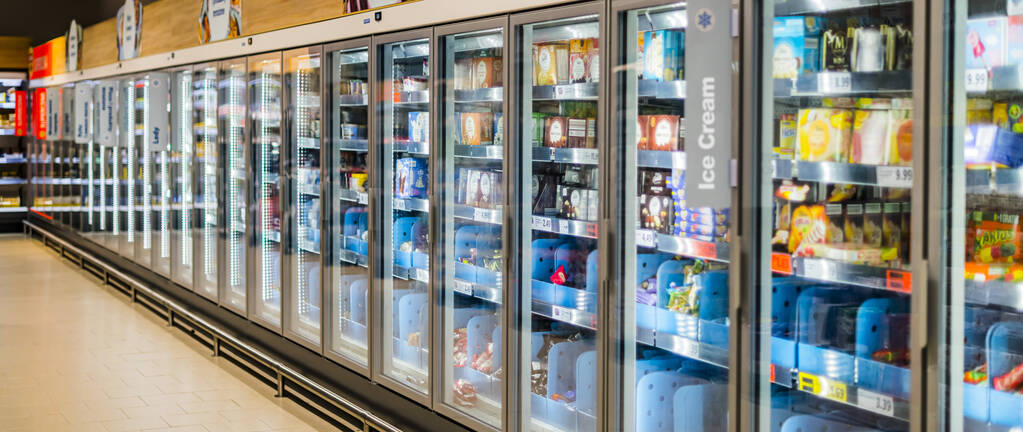For restaurants, cafes, and other food service businesses, the efficient use of space is crucial to operations. Commercial freezers, essential for preserving the quality and safety of food, often present a challenge in terms of space management. Maximising freezer space not only enhances organisation but also contributes to cost savings and waste reduction. In this blog, we’ll explore some creative storage solutions and best practices for optimising space in commercial freezers.
Understanding Your Space and Needs
Before diving into the rearrangement or purchase of storage solutions, it’s important to assess your current freezer space and understand your specific needs. Measure the interior dimensions of your freezer and note any existing shelving or built-in storage features. Consider the types of products you need to store and their storage requirements. For example, meats may require different storage conditions compared to baked goods.
Strategic Shelving Solutions
One of the most effective ways to maximise space in a commercial freezer is through the use of well-designed shelving. Adjustable shelving can be particularly useful, as it allows you to modify the setup based on the size and shape of the products you’re storing. Opt for shelving that is durable and designed to withstand low temperatures without rusting or deteriorating. Additionally, consider investing in mobile shelving units that can be easily moved to accommodate varying storage needs, providing flexibility as your inventory changes.
Vertical Dividers
Installing vertical dividers can help you efficiently utilise the height of the freezer, allowing you to stack items securely without risk of them toppling over. This method is particularly effective for organising irregularly shaped items or products that are frequently accessed, ensuring they are easy to retrieve while maintaining order.
Sliding Baskets
For smaller items or those that need to be accessed frequently, sliding baskets can be a game-changer. They make it easy to reach items stored at the back without having to remove everything in front. These baskets are also ideal for grouping similar items together, which can speed up the inventory process and reduce the time staff spend searching for products.
Utilising Bins and Containers
Clear storage bins and containers can significantly improve the organisation within a commercial freezer. They not only help in grouping similar items together but also prevent cross-contamination and make inventory checks more straightforward. Transparent containers allow staff to quickly see contents without opening them, which helps maintain internal temperature and reduces energy costs.
Label Everything
Clearly label each bin and container with its contents and the date of storage. This practice not only aids in organisation but also helps in implementing a first-in, first-out (FIFO) system, which is crucial for managing perishables. Labels should be resistant to moisture and low temperatures to ensure they remain legible over time.
Choose the Right Materials
Ensure that the bins and containers used are suitable for freezer temperatures to avoid cracking and damage. Materials such as polycarbonate are recommended because they can withstand extreme cold without becoming brittle.

Smart Stacking Techniques
Effective stacking can dramatically increase the storage capacity of your freezer. However, it’s important to do it wisely to maintain food safety and quality. Organise your products based on usage frequency and accessibility to minimise movement and energy loss.
Heavy on Bottom, Light on Top
Always stack heavier items on the bottom and lighter items on top to prevent crushing and to maintain stability. This method also reduces the risk of workplace accidents caused by falling objects.
Leave Air Gaps
While it might be tempting to pack everything tightly, leaving small air gaps between items can improve air circulation, leading to more uniform cooling and reduced energy costs. Better air circulation helps maintain consistent temperatures, which is vital for food safety and quality.
Implementing an Inventory Management System
An inventory management system goes hand in hand with physical storage solutions. By keeping track of what goes in and out of the freezer, you can better manage space and reduce waste. This system also helps in forecasting demand and adjusting orders to prevent overstocking.
Use Technology
Consider investing in inventory management software that integrates with your point-of-sale (POS) system. This can provide real-time data on stock levels and help in making informed decisions about reorder points and quantities. Such integration can streamline operations and reduce the likelihood of human error.
Regular Audits
Regularly scheduled audits can help identify any inefficiencies or unnecessary stockpiling that might be taking up valuable space. These audits should be thorough and involve checking expiration dates, reviewing stock levels, and assessing the condition of the freezer and its contents.
Training Staff on Best Practices
Your storage optimisation strategies will only be effective if your staff is on board. Training your team on the best practices for loading, organising, and maintaining the freezer is essential. Regular training ensures everyone is up to date on the latest procedures and technologies.
Create a Manual
Develop a simple manual or guideline that outlines how items should be stored in the freezer. Include diagrams and photos to make it easy to understand. This manual should be readily accessible and serve as a quick reference for all staff members.
Schedule Regular Training Sessions
These sessions can be used to reinforce good practices and introduce new team members to your system. Frequent training helps maintain high standards and ensures that all staff members are proficient in effective freezer management techniques.
Conclusion
Optimising space in commercial freezers is not just about buying the right equipment—it’s about thoughtful planning, consistent management, and ongoing staff training. By implementing these creative storage solutions, businesses can enhance operational efficiency, improve food safety, and minimise waste. Remember, the key to effective freezer management is continual evaluation and adaptation to changing needs.